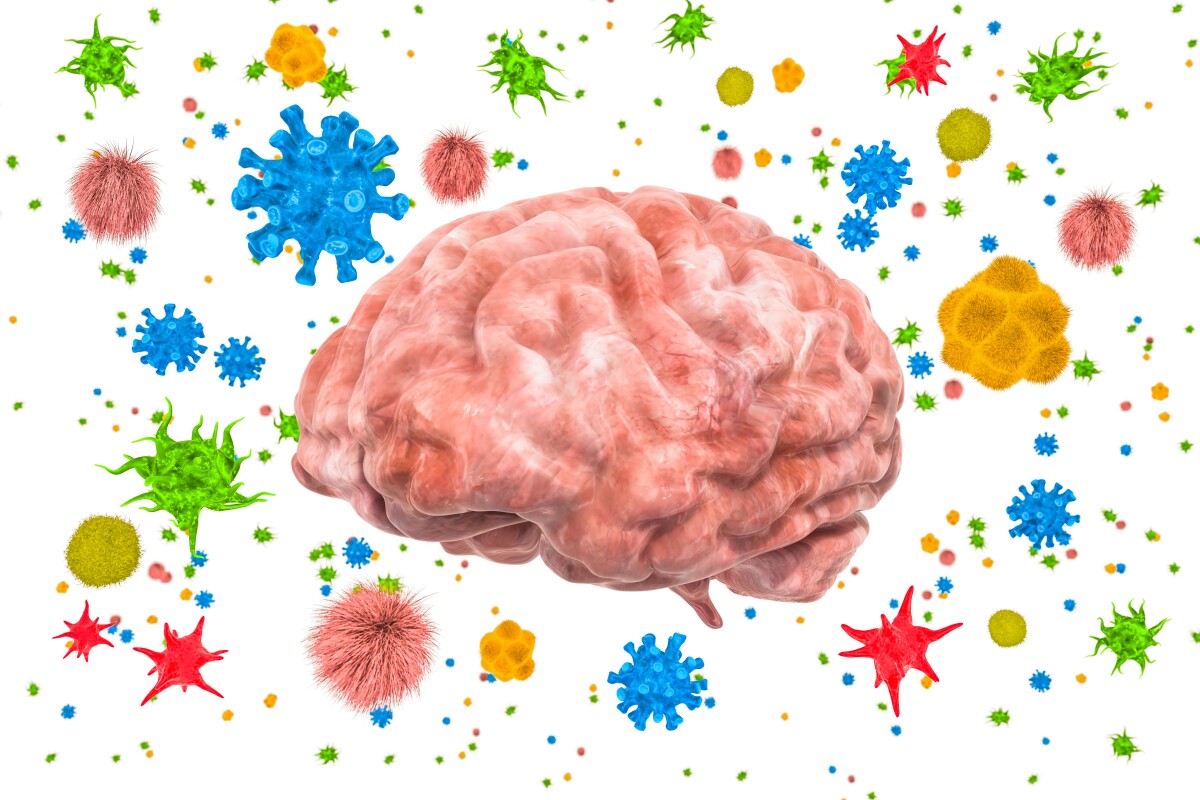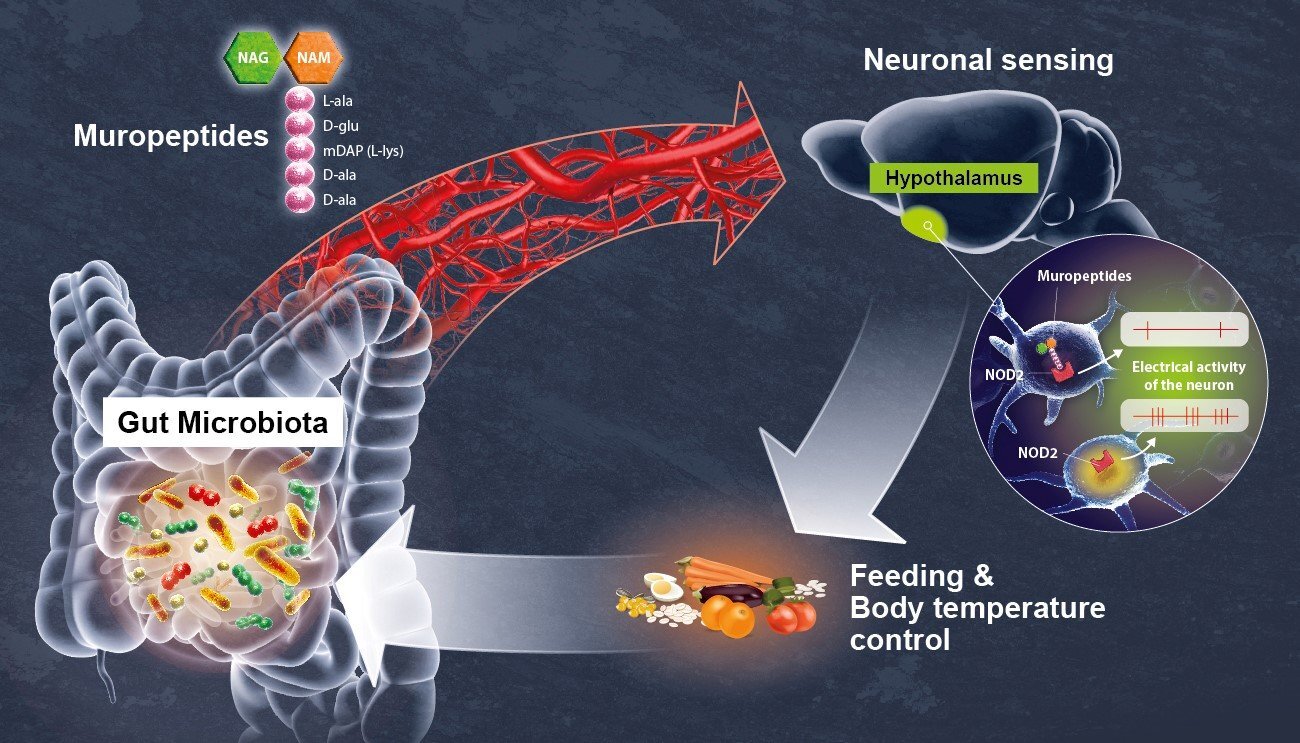
The astonishing thing is that comms take place, but reflection tells us this mustbalso be true. Here we have the actual mechanism used and yes, it is unexpected
Thjis leads to a deeper umderstanding of the brole of our entire gut biome which until recently we happily ignored.
no more for all that it appears.
Researchers have discovered neurons in the brain's appetite-control region are directly influenced by bacterial molecules
https://newatlas.com/science/direct-gut-brain-communication-nod2-bacteria-appetite/
New research published in the journal Science reports the discovery of a unique pathway by which bacteria in the gut can directly communicate with neurons in the brain responsible for regulating appetite and body temperature. The novel mechanism adds to our growing understanding of gut-brain communication pathways.
One of the most compelling emerging areas in medical science is the relationship between the gut and the brain. Recent research has uncovered fascinating ways these two distinct parts of the body communicate with each other, from the discovery of novel gut cells that can nearly instantly engage neural synapses, to the revelation that certain types of bacteria in the gut can influence the activity of immune cells in the brain.
Most of these gut-brain discoveries involve bacteria indirectly influencing the brain, such as through releasing molecules that trigger cascades of other mechanisms. But this new study describes a novel way that bacteria can directly modulate the activity of certain clusters of neurons.
The research began by investigating a type of receptor called NOD2 (nucleotide oligomerization domain). These receptors are generally found on certain immune cells and they respond to the presence of bacterial molecules known as muropeptides.
When bacteria grows, replicates or dies it releases these muropeptides from its cell walls. Immune cells rely on NOD2 receptors to detect these muropeptides and keep bacterial populations in check. NOD2 abnormalities have been linked to inflammatory bowel disorders such as Crohn’s Disease.
Knowing NOD2 is key to the body directly sensing these bacterial molecules the researchers wondered whether any neurons in the brain held NOD2 receptors. Not only did this new study discover there are NOD2 receptors expressed by neurons across many regions in the brain, but a high density of NOD2 activity was particularly detected in the hypothalamus, a brain area responsible for metabolic functions such as appetite and body temperature control.
Across a series of innovative animal experiments the researchers discovered muropeptides can directly influence neural activity in regions of the brain controlling appetite. Mice engineered to lack NOD2 demonstrated rapid weight gain and a higher susceptibility to metabolic diseases such as type 2 diabetes. Essentially, the research found without NOD2 receptors the muropeptides from gut bacteria could not help regulate food intake and body temperature.
To be sure it was bacterial muropeptides playing this role the researchers used radioactive tags to track the movement of these molecules. Around four hours after feeding the animals these tagged muropeptides the researchers discovered the molecules had traveled up into the brain and engaged with neurons in the hypothalamus.
A visual depiction of the newly discovered communication pathway
Institut Pasteur / Pascal Marseaud
"It is extraordinary to discover that bacterial fragments act directly on a brain center as strategic as the hypothalamus, which is known to manage vital functions such as body temperature, reproduction, hunger and thirst," said Pierre-Marie Lledo, an author on the new study.
Interestingly, the researchers noted the impact of this muropeptide/NOD2 mechanism was most prominent in older female mice, particularly around six months of age. The study suggests this age period in mice correlates with pre-menopausal periods of human lifespan. It is hypothesized that hormonal changes in middle-aged women could influence this muropeptide/NOD2 pathway, leading to the hot flushes and body weight changes common to menopause.
Of course, it is important to stress the usual caveat that this research so far has only been conducted in animals. So further work will be needed to understand whether this same gut-brain pathway plays a similar role in human metabolism.
Nevertheless, this study is a valuable new contribution to our growing insights into how the gut communicates with the brain. And more specifically, if this NOD2 mechanism is replicated in humans it opens the door for researchers to investigate new ways to treat metabolic disorders.

No comments:
Post a Comment